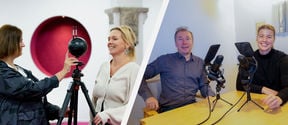Product design course focusing on the challenges of the crane industry – corporate cooperation bearing fruit
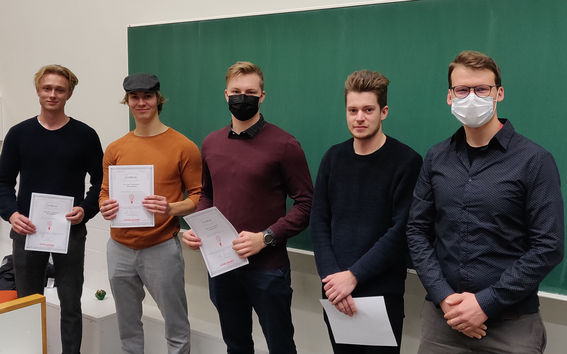
In the autumn, 146 Aalto University students spent six weeks looking for solutions for the maintenance of Konecranes’ crane components, creating dozens of new and fresh ideas to solve the issue of self-monitoring the condition of crane components.
The aim of the product design course at the Department of Mechanical Engineering is to understand the systematic product design process and to apply the lessons learned in practice. Each course is based on a practice assignment from a company.
‘Having the challenge come from a company is an amazing motivator for students. The course is one of the first major subject courses where students get to apply what they have learned, and a genuine problem from industry is a good example of the work available after graduation’, explains Sampo Laine, head assistant on the course and doctoral candidate at Aalto University.
Konecranes has been involved in the product design course since 2017.
‘The course gives us fresh ideas and starting points for new concepts that nobody might otherwise look into in the day-to-day of the company. The student teams’ course exercises give us information about new trends and an idea of what people are currently studying at the university’, says Konecranes innovation specialist Ari Bertula.
In addition to bachelor’s degree students in mechanical engineering and structural engineering, the course includes students from all Aalto schools.
‘During the course, a company has the opportunity to work closely with students for six weeks. This is a unique opportunity to get to know a large group of students and show that the company is an active maker of the future’, says Laine.
Self-monitoring crane rope guide and coupling
This year, the course exercise was related to the self-monitoring of crane components.
‘The principle is proactive maintenance by having crane components indicate their condition independently. The course exercise involved developing self-monitoring for either the crane rope guide or the axle coupling’, Bertula says.
The exercise was done in groups of four, with the course progressing through lectures, weekly reports and Q&A sessions.
Second-year mechanical engineering student Arttu Korhonen’s team decided to work on the monitoring of the crane rope guide after the group came up with several relevant ideas straight from the start.
‘I had never imagined that product design was such a systematic process. It was really good that we reviewed the process weekly and received feedback and tips on what had gone well and what could be improved’, Korhonen says.
Credibility with exercises from a corporate source
Student Kivi Knuuti’s team developed a device for the self-monitoring of a crane coupling by observing the condition of a rubber part in the centre of the coupling.
‘As the rubber part wears down, there is a gap that forms between the halves of the coupling. We decided to measure the gap using magnetic sensors and small magnets in the coupling. We proved the existence of the gap with a model where we 3d printed the halves of the coupling and used a new and a worn rubber part’, says Knuuti.
The course opened Knuuti's eyes to product design as a systematic process where a working group has to find common ground for developing ideas towards a concrete end product.
‘Having the company involved gave the course exercise a totally new level of credibility because it was a real problem from a company, something that may not have a solution yet’, says Knuuti.
Korhonen was thinking along the same lines: ‘We looked for a solution to a problem that we might encounter when we're working in the industry. During the Q&A sessions on the course, we were able to ask Ari Bertula from Konecranes about the criteria that the company has for us when we start moving forward with our ideas.’
High-quality exercises
The course culminated in a four-hour gala event where the teams presented their solutions using a conceptual model they had built. The course work was also evaluated during the event.
‘Two groups were awarded diplomas, one selected by Konecranes and one by the students on the course. The quality of the student projects was very high this year’, says Petri Kuosmanen, Professor of Mechanical Engineering at Aalto University.
Ari Bertula is likewise satisfied with the results of the course: he now has the insights of 36 student teams on what direction the development of component self-monitoring could take.
‘It was great to see how different teams discovered very different perspectives for solving the problem.’
The course has received very positive feedback from students. This autumn, after Covid restrictions, students gave special thanks for organising the lectures on the campus. For many second-year students, this was their first on-campus course.
‘This was a first. I've had students thank me for giving good lectures, but never before have students given thanks for giving lectures in the first place!’, Kuosmanen says.
Different forms of cooperation
Konecranes is also taking part in the Aalto training course in mechatronics where master’s degree students get to deepen their knowledge of the crane industry.
‘When a student we know from the Aalto courses applies for a summer job with us, they already have a grasp on the crane industry. We have been able to recruit some great summer workers from Aalto students’, Bertula says.
Aalto and Konecranes also work closely together on the Aalto Industrial Internet Campus (AIIC) which features an Ilmatar smart crane donated by Konecranes.
‘When we have company equipment and systems on campus, we can develop courses and do research around them. As a university, we want to intensify cooperation with the surrounding society, and industry is an important partner for us’, Professor Kuosmanen says.
Text: Marjukka Puolakka
Further information:
- Published:
- Updated:
Read more news
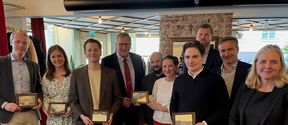
Towards the transition from the academic world to the professional world
Accounting Masters students had the opportunity to tackle real-life business challenges in the CAPSTONE course in accounting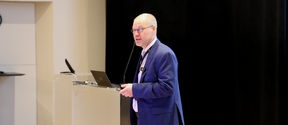
Civil Engineering invites companies to participate in future development work
A stakeholder event organized by the Department of Civil Engineering has already become a spring tradition. Civil Engineering Day was held on April 25 in Dipoli Otaniemi.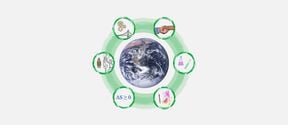
Aalto’s New Cross-Cutting Minor: Sustainable Use of Natural Resources (Luonnonvarojen kestävä käyttö)
Aalto’s new multidisciplinary minor, Sustainable Use of Natural Resources (Luonnonvarojen kestävä käyttö) is ready to add to your study plan!